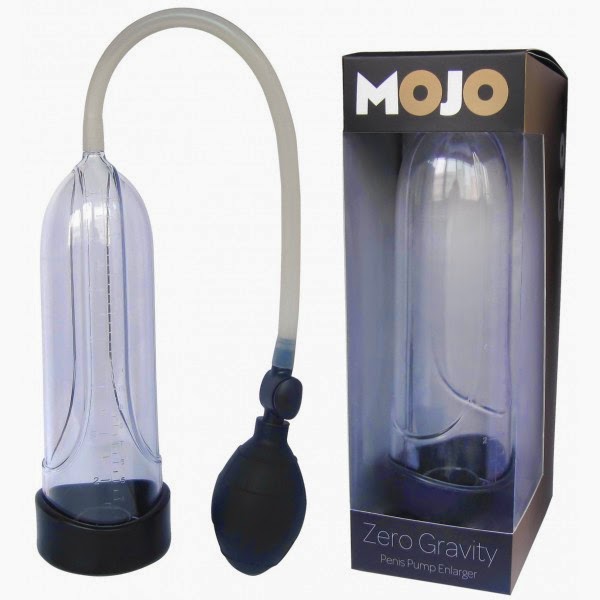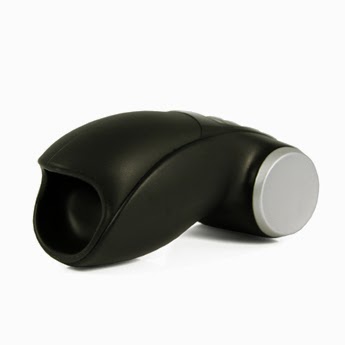Part of "choke me, spit on me, I'm a feminist" from PerksMag by Clarissa-Jan
Read full post »
Photo credit: Alex Pappajohn, flickr
‘Real, non-consensual sexual violence is not okay. It does not turn me on…but the fantasy does…’
At 43, Melissa K.—who did not wish to disclose her last name for privacy reasons—is a homeowner and works in the publishing industry in California. She identifies as a heterosexual feminist, and enjoys a healthy dose of bondage and rape play in the bedroom.
‘I really enjoy having my lover be forceful and hold me down,’ said Melissa, her brown, Capelli d’Angelo hair framing a structured face. ‘As a feminist I always thought, “Am I somehow betraying women by enjoying that?” Because actual rape is horrible and horrifying, but then I really enjoy fantasies—like, rape fantasies.’
Upon discovering her inclination toward BDSM at a young age, Melissa’s feminist values drew her into self-conflict. ‘I had a lot of struggle with how to reconcile those two things, because I’m absolutely not interested in having that happen to anybody in real life. Real, non-consensual sexual violence is not okay. It does not turn me on,’ she said, ‘but the fantasy does. So I did a lot of thinking about that—worrying about whether it was okay to have those thoughts.’
Melissa’s first encounter with BDSM was during adolescence. She had caught eye of a copy of a National Geographic magazine lying around, its cover she recalls as ‘a picture about Mayan temples or something, and this person—I can’t even remember the gender—tied to an altar and a priest like, over him.’ The imagery of bondage aroused her instantly. ‘That totally turned me on,’ she said. ‘I kind of joke that National Geographic turned me kinky.’
The advent of her sexual exploration was accompanied by feelings of shame and guilt. ‘I started having these kinds of fantasies about rough sex and bondage and stuff,’ she said. ‘I thought there was something wrong with me. I made this little thing on my bed frame, like these little yarn loops that I could tie myself up to, and I felt really ashamed about it… When I was masturbating, I would fantasize—I would always fantasize, 100 percent of the time, about being forced.’
As a child, she also expressed her sexual fantasies artistically, not fully understanding what they meant. ‘I would draw these scenes where there were these women and they were tied up and naked,’ she said. ‘I think at one point my mom found them; I’m still too embarrassed to ask her about it.’
‘Choosing the kind of sexuality I enjoy is, to me, strongly feminist.’
Despite having a sexual appetite since the age of 13, Melissa only became sexually active at 26. ‘I was really shy and I was like, not that attractive,’ she said, although it’s hard to believe now—her face, bright and tan, lifted by her softly chiselled cheekbones, lay bare her simple, easy beauty.
In the course of her three-year relationship with her college sweetheart, they never had intercourse. ‘He was really big, and I was nervous. We did other things sexually, but then…’ she trailed off, shrugging her shoulders.
The disgrace she harboured for her BDSM desires vanished once she made the conscious decision to engage in kink. Melissa decided that as she made an independent choice giving consent to a partner to tie, flog, or hold her down, there was scant reason to deny herself that thrill. ‘Nobody’s ever manipulated me into it. Because it’s a strong choice, it’s by definition feminist: having the ability to make whatever choice works for you,’ she said. ‘Choosing the kind of sexuality I enjoy is, to me, strongly feminist.’
Melissa’s brand of feminism is having the ability to make the decisions that she wants to make. As she sees it, the feminist movement was a reaction to women being denied the right to participate in society. From political to personal and sexual rights, women were always seen as inferior to men and unfit to make decisions for themselves, such as the propriety of their attire, their partner of choice, the ability to vote—feminism was in response to the repression that women suffered in society.
A former English major and Women Studies minor at Humboldt State University, Melissa identified with feminism since her college days. But her mother had a substantial role in her feminist leanings from early on. At the age of four or five, with Christmas around the corner, perching on her mother’s lap as they both thumbed through a Sears toy catalogue, her mother pointed at a race car set, and asked Melissa, ‘What do you think about that—does that interest you?’ Melissa lamented that it was a ‘boys’ toy’, to which her mother promptly declared, ‘There’s no such thing as boys’ or girls’ toys. You can get whatever you want.’
In that moment, Melissa realised gender rules were ‘totally random,’ and ‘made up.’ It was only when entering college that she began to reflect on feminism on a deeper level, considering the socio-political and cultural aspects. ‘When I was 19, I remember I just officially said to myself, Yeah. I’m a feminist. [And] I’ve never questioned that.’
In many ways, BDSM is strongly feminist, said Melissa. ‘In the BDSM community, it’s really, really, really, important that people talk—that the lovers really communicate about what they want, what the safe word is, and what’s okay and what’s not okay,’ Melissa said. ‘Consent and communication are super important in a healthy BDSM relationship… If a dominant person exploits a woman, they’ll personally get shunned [from the BDSM community] because it’s too dangerous. You can’t mess around with having that kind of control over people and not being really careful of not hurting them.’
‘He dumped [the bag] on my floor, and I’m like, What am I getting myself into? This is crazy.’
Melissa started dabbling in BDSM three years ago. She was at a friend’s party where a clothing swap was taking place, and she had donated a Halloween cat costume—complete with ears, a tail, and a black collar—that a friend of hers tried on. Within eavesdropping distance, a ‘handsome guy’ made a remark about how the collar wouldn’t be strong enough to keep anyone tied up. ‘I was like, Oh, he sounds like he knows what he’s talking about. It just clicked in my head that I could probably have some interesting experiences with this person,’ she said, adding that she was especially conscious about wanting to have kinky sex. ‘I just went up to him and started flirting. He was very easy to pick up.’
They made a date to get together another time, and he arrived at Melissa’s apartment lugging a duffel bag of BDSM equipment and sex toys in tow. ‘He dumped [the bag] on my floor, and I’m like, What am I getting myself into? This is crazy,’ she recalled, laughing. ‘I didn’t even know what they were.’ As an introduction to BDSM, he used the flogger (an accessory used for whipping, with a handle holding together a cluster of straps) on her. ‘It felt so great. I remember afterwards lying there going, Why does this feel so good?’
‘After a session, I feel proud, and proud of my bruises and marks.’
The pain play Melissa experiments with in the bedroom—flogging, pinching, slapping, whipping—is incredibly empowering because it enables her to explore the limits of her physical endurance. ‘After a session, I feel proud, and proud of my bruises and marks. It’s maybe a little bit akin to an extreme athlete feeling proud of the pain she endures for her sport,’ Melissa said.
When she first started exploring kink, Melissa went into a ‘sub frenzy,’ a term for submissives—usually those new to BDSM—who become highly enthusiastic and adventurous as they delve into the lifestyle. For a year, she was constantly on FetLife, joining an array of groups on the social media website, seeking out people to talk to.
The one time she had a BDSM play go wrong, Melissa, then a relative newcomer to the lifestyle, was playing with a boyfriend. They had met in the Burning Man group on Facebook, the start of a year-and-a-half long distance relationship. They saw each other every six weeks or so. He had expressed interest in kink, and though they were somewhat unseasoned in the BDSM ropes, they agreed to experiment in the bedroom. ‘We were playing around but we never had a conversation about safety and what was okay and what was not,’ she said. He tied Melissa up and left her alone, which terrified her.
‘It wasn’t around my throat or anything so nothing would’ve happened—it was just my arms—but it freaked me out.’ Another time after binding her arms, he used a boxcutter to cut the rope and accidentally knicked her hand in the process. Melissa later ordered a pair of safety scissors from Amazon and had it shipped to him. ‘It’s all a learning experience, but I wouldn’t play that way with somebody inexperienced again, I don’t think,’ she said.
‘Another intense way of bonding’
Melissa’s current partner Blake (whose name has been changed for privacy reasons) is kinky, although before him she was with a man who was vanilla. The difference between both relationships is stark, not only because Blake is more ‘competent, smart, engaged in his communities, caring, and interested in forming a real, committed partnership with me,’ she said, but also because his sexual preferences are much more in tune with hers.
‘The kink gives us another intense way of bonding. When lovers share that kind of experience, if both of them are present in the situation, it can be really intense, and can bring them closer together. He’s someone I’d call a sadist, though not the most sadistic person I’ve played with,’ Melissa contemplated. ‘I like that he’s not afraid of hurting me; his confidence paired with his empathy (he can take me to the edge and then stop) is super sexy to me. And it’s so great not to have to hide that part of myself—the part that gets off on rough sex. The sex has been fabulous.’
Melissa acknowledged that being with someone who enjoys kink as much as she does—or even more—was a huge perk: it provided an added dimension to the relationship.
‘The kink/BDSM stuff allows for more potential depth, as we navigate what kind of relationship we develop,’ she wrote later, adding that it embodies what she thinks of as positive kink. ‘He said, as we were talking about this issue: “I’m not sure yet to what extent I get to order you around.” He’s dominant, yet also totally present with me and not wanting to overstep whatever power I’m willing to give him.’
‘In healthy BDSM communities it’s never assumed that people know what you like because of your gender… It’s actually a complete opposite of what a patriarchal culture does for women.’
Melissa’s active engagement in BDSM has allowed her to scrutinise the power dynamics of traditional male and female roles personally. ‘In kink, both people are making choices and they’re really thinking and talking about it with each other. It’s like exploring the power dynamics between men and women, but doing it really consciously, not blindly, [and] all this stuff that we never get to talk about in our culture—about men and women, strength and sex, and who’s the aggressor. Receiving somebody’s power like that, I find it fascinating,’ she beamed. ‘Also it turns me on.’
Outside of the bedroom, Melissa prefers dominant men because of their energy and strength of character that she says vanilla people lack. ‘People that I find are good dominant lovers are really mindful that they have a lot of power, and they can’t mess with it. My favourite kind of lovers are the ones that are really confident, but not cocky, and also very aware of me and what I might be wanting. When I’m dating people who aren’t kinky, they have less of a grounding of themselves because they haven’t played with that power.’ Melissa is also more trusting of her dominants, partly because she deems them more empathetic and in tune with her desires.
Melissa contends that not all BDSM practitioners have experienced sexual distress in the past, nor is the desire for it necessarily a by-product of the patriarchy or a male-dominant society. ‘I think it exists because people are very complicated,’ she said. ‘In healthy BDSM communities it’s never assumed that people know what you like because of your gender… [There are] dominant women, submissive men. It’s actually a complete opposite of what a patriarchal culture does for women.
‘In patriarchy, women are assumed to be weak and submissive and stupid and have no power. In BDSM it’s opposite; in fact, many people in BDSM would argue that the submissive one is the one in control because that’s the person making the rules. The submissive is the one that stops it if he or she doesn’t like it. And in a healthy BDSM relationship there is no question that you stop now if that person says it. Also, just for the record, I’ve never been sexually assaulted, raped, or molested. Many anti-kink feminists and others also assume submissives have sexual trauma in their pasts.’
For Melissa, choosing to go down the path paved with pain and exploring a previously verboten side to her sexuality empowered her and boosted her self-confidence. ‘I’ve always been extremely shy and had trouble making friends, and had body-image problems (like so many women do),’ she wrote retrospectively in an email. ‘After I started exploring kink, I felt more comfortable with my body than ever, and nobody who knows me now would ever call me shy. I don’t think it was kink per se that changed these things, but the power of giving myself permission to explore and discover this deep part of myself that did it. I feel better about myself than I ever have.’
Read More of the series at PerksMag
Explore your kinky side at Passionfruit the Sensuality Shop's next BDSM & Tantra for Couples workshop














